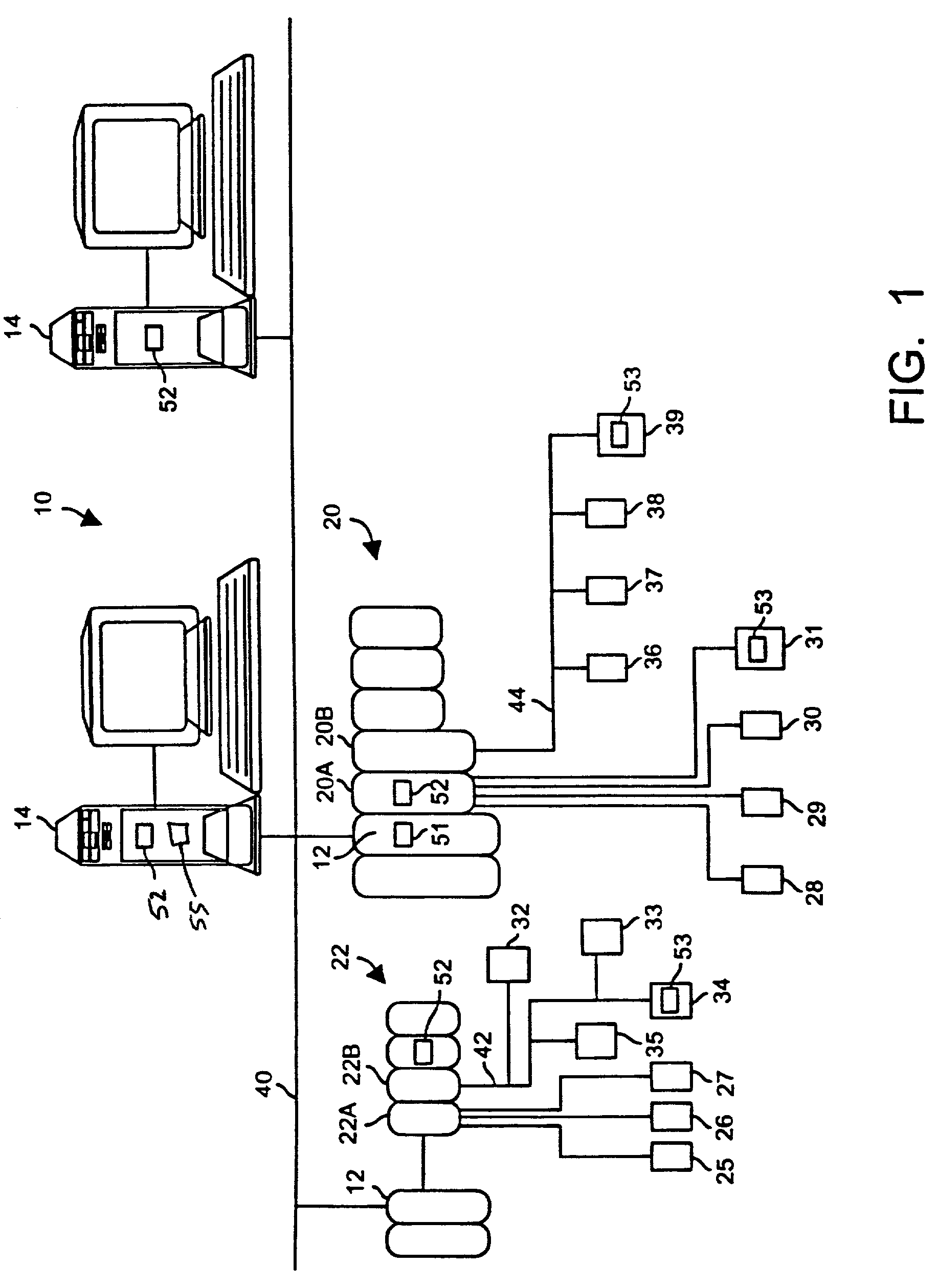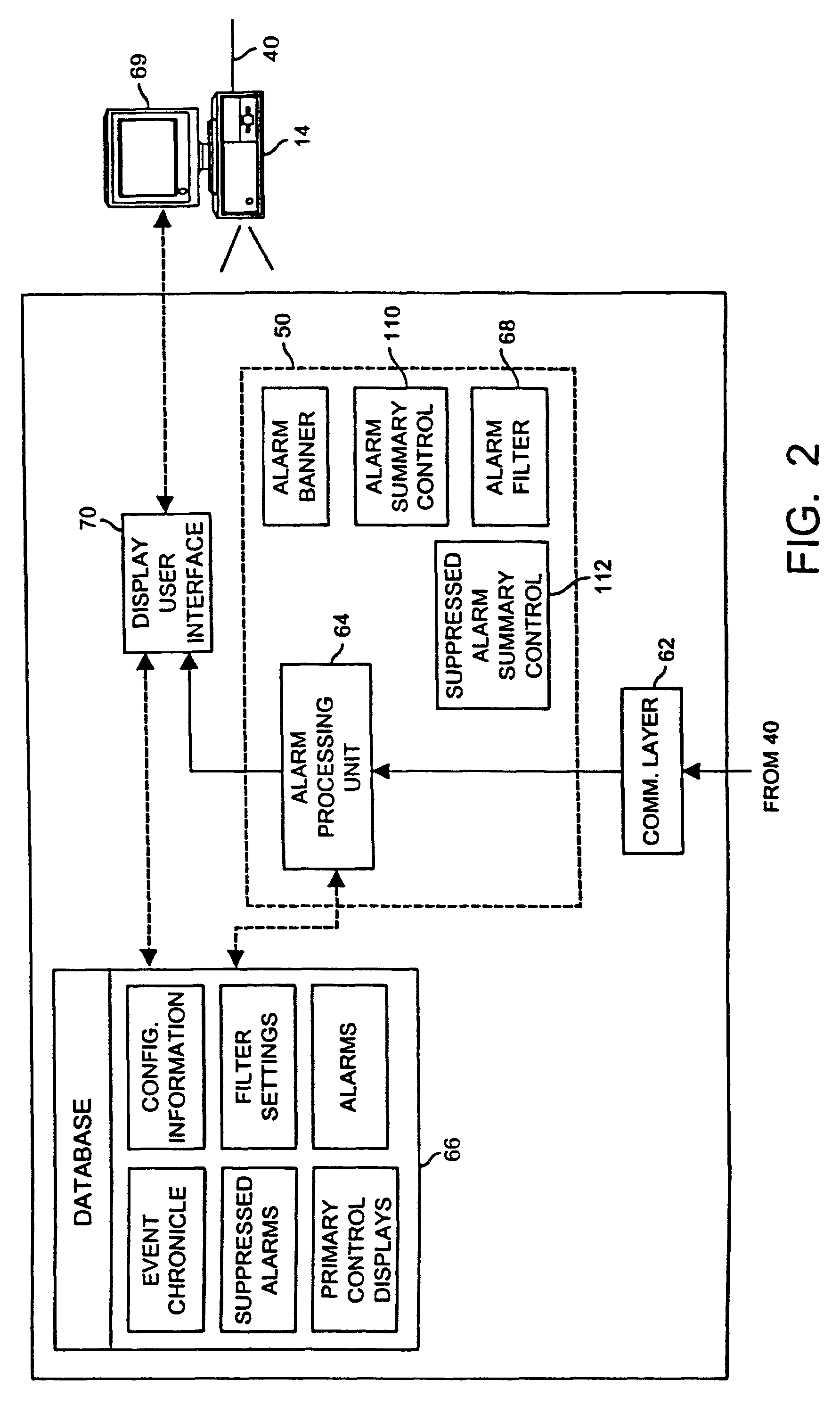Integrated device alerts in a process control system
a technology of process control system and alert, applied in the direction of signalling system, testing/monitoring control system, instruments, etc., can solve the problems of limited nature of 4-20 ma signals, inability to generate alarms or alerts pertaining to the operation capability and the general lack of alarms associated with the condition or status of the devi
- Summary
- Abstract
- Description
- Claims
- Application Information
AI Technical Summary
Benefits of technology
Problems solved by technology
Method used
Image
Examples
Embodiment Construction
[0035]Referring now to FIG. 1, a process control network or system 10 includes one or more process controllers 12 connected to one or more host workstations or computers 14 (which may be any type of personal computer or workstation) and banks of input / output (I / O) devices 20, 22, each of which is connected to one or more field devices 25-39. The controllers 12 may be, for example, DeltaV™ controllers sold by Fisher-Rosemount Systems, Inc., and are communicatively connected to the host computers 14 via, for example, an Ethernet connection 40 or any other suitable communication link, including the Internet. Likewise, the controllers 12 are communicatively connected to the field devices 25-39 using any desired hardware and software associated with, for example, standard 4-20 mA devices and / or any smart communication protocol such as the Fieldbus or HART protocols. As is generally known, the controllers 12 implement or supervise process control routines stored therein or otherwise assoc...
PUM
 Login to View More
Login to View More Abstract
Description
Claims
Application Information
 Login to View More
Login to View More - R&D
- Intellectual Property
- Life Sciences
- Materials
- Tech Scout
- Unparalleled Data Quality
- Higher Quality Content
- 60% Fewer Hallucinations
Browse by: Latest US Patents, China's latest patents, Technical Efficacy Thesaurus, Application Domain, Technology Topic, Popular Technical Reports.
© 2025 PatSnap. All rights reserved.Legal|Privacy policy|Modern Slavery Act Transparency Statement|Sitemap|About US| Contact US: help@patsnap.com



